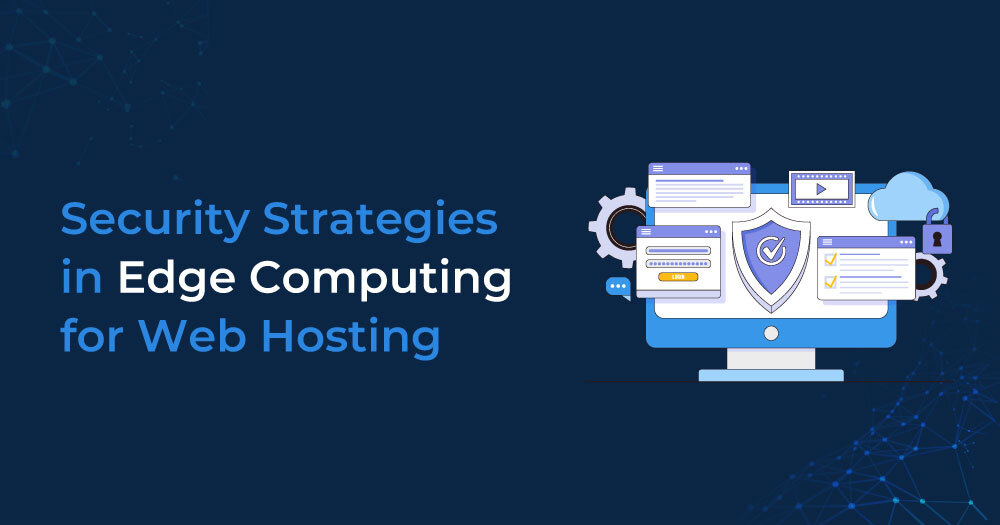Edge computing represents a seismic shift in the architecture of data processing and delivery, moving computational resources closer to the point of data generation and consumption. By decentralizing computing power to the edge of the network, this innovative approach promises significant benefits for web hosting providers, including enhanced performance, reduced latency, and improved bandwidth efficiency. However, with these advantages come complex and pressing security challenges that must be addressed comprehensively to safeguard sensitive data and ensure the integrity of hosted services.
Table of Contents
Understanding Edge Computing Security Challenges
The fundamental shift of edge computing lies in its decentralized infrastructure. Unlike traditional centralized cloud computing, edge computing distributes data processing and storage across a multitude of edge devices dispersed geographically. While this distribution enhances speed and efficiency, it concurrently expands the attack surface, presenting multiple entry points for potential cyber threats. Each edge device, ranging from IoT devices to edge servers, becomes a potential target for malicious actors seeking to exploit vulnerabilities and compromise data integrity.
Moreover, the proximity of edge computing to end-users introduces heightened concerns regarding data privacy and compliance with regulatory frameworks such as GDPR and CCPA. The decentralized nature of edge computing necessitates robust security strategies tailored specifically to mitigate these risks and uphold stringent privacy standards.
Key Security Strategies for Web Hosts
- Endpoint Security: Endpoint security forms the cornerstone of a robust defense strategy in edge computing environments. Implementing comprehensive endpoint protection solutions, including next-generation firewalls, antivirus software with advanced threat detection capabilities, and intrusion detection and prevention systems (IDPS), is crucial. These measures help to fortify edge devices against evolving cyber threats and unauthorized access attempts.
- Data Encryption: Encrypting data both at rest and in transit is imperative to safeguard sensitive information processed and transmitted within edge computing environments. Deploying strong encryption algorithms, such as AES-256, ensures that data remains secure and unreadable to unauthorized parties even if intercepted during transmission or stored on edge devices.
- Access Control: Implementing stringent access control policies is essential to restrict unauthorized access to critical resources within the edge computing infrastructure. Utilizing robust authentication mechanisms such as multi-factor authentication (MFA) and role-based access control (RBAC) enables organizations to enforce least privilege principles and mitigate the risk of unauthorized access and data breaches.
- Patch Management: Regular and timely application of security patches and updates to edge devices and software components is paramount. Proactive patch management practices help mitigate known vulnerabilities and ensure that edge computing environments remain resilient against emerging cyber threats. Conducting thorough testing and validation of patches before deployment minimizes potential disruptions to web hosting services.
- Network Segmentation: Segmenting the network into distinct and isolated zones enhances security posture by containing potential security breaches and limiting lateral movement within the infrastructure. Implementing virtual LANs (VLANs), network firewalls, and intrusion prevention systems (IPS) effectively segregates traffic and mitigates the risk of unauthorized access and data exfiltration across the edge computing network.
- Monitoring and Logging: Continuous monitoring and logging of edge devices and network traffic provide critical insights into the security posture and operational integrity of edge computing environments. Leveraging advanced security information and event management (SIEM) solutions enables organizations to detect anomalous activities, identify potential security incidents, and initiate timely response measures to mitigate risks and minimize impact.
Case Studies and Best Practices
Case Study: XYZ Hosting’s Approach to Edge Computing Security
XYZ Hosting, a leading web hosting provider, successfully implemented edge computing to optimize service delivery and enhance client satisfaction. By prioritizing comprehensive endpoint security, robust data encryption practices, and stringent access control mechanisms, XYZ Hosting mitigated security risks and maintained the confidentiality and availability of hosted services.
Best Practices:
- Security Awareness Training: Educating personnel on emerging cyber threats and best practices fosters a culture of security awareness within the organization.
- Third-Party Audits: Conducting regular security audits and penetration testing validates the effectiveness of security measures and identifies vulnerabilities for remediation.
- Compliance and Regulations: Adhering to industry regulations and compliance standards ensures that security measures align with legal requirements and industry best practices, enhancing trust and credibility among clients.
Future Directions and Conclusion
Looking forward, the evolution of edge computing will continue to shape the landscape of cybersecurity strategies for web hosting providers. Embracing emerging technologies such as artificial intelligence (AI) and machine learning (ML) for advanced threat detection and predictive analytics will empower organizations to proactively identify and mitigate evolving cyber threats in real-time. Collaboration within the cybersecurity community to share threat intelligence and best practices will further bolster defenses and fortify edge computing environments against sophisticated cyber adversaries.
In conclusion, while edge computing offers compelling benefits for web hosting providers, including enhanced performance and scalability, robust security strategies are indispensable to mitigate risks, protect sensitive data, and preserve client trust. By implementing comprehensive security measures, remaining vigilant against emerging threats, and cultivating a proactive security culture, web hosts can confidently harness the transformative potential of edge computing while safeguarding their infrastructure and delivering secure and resilient hosting services.
